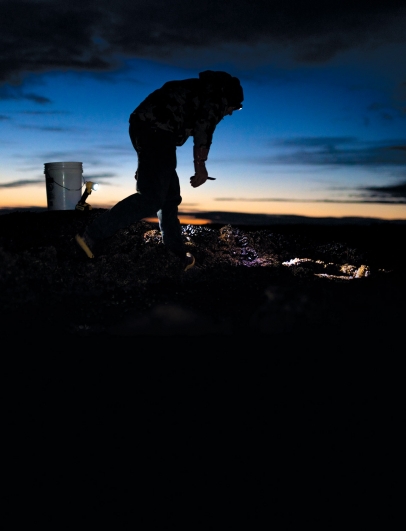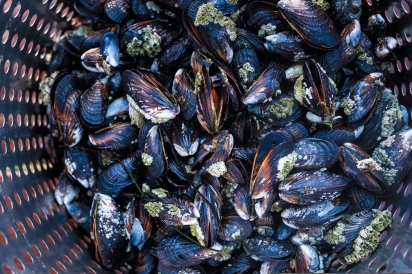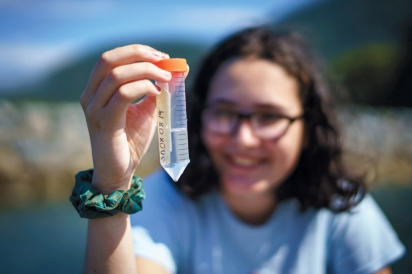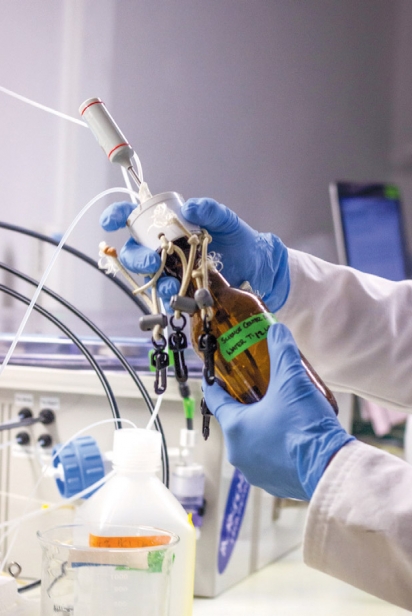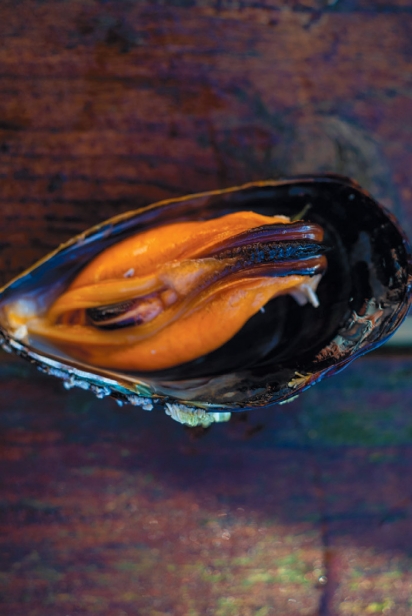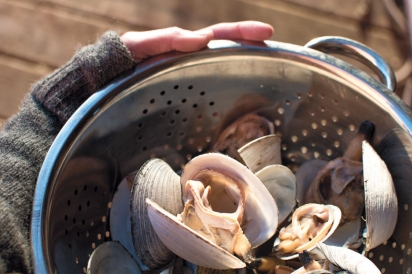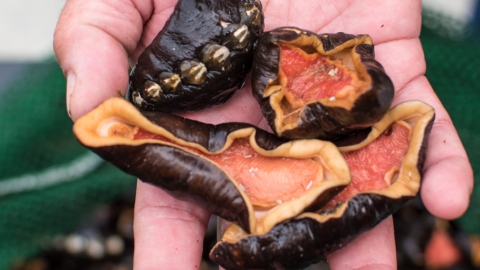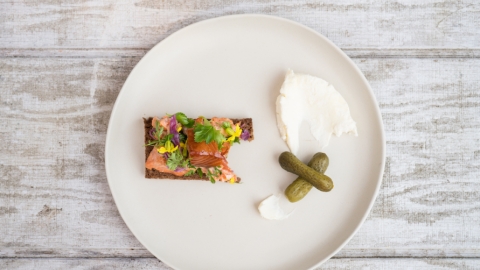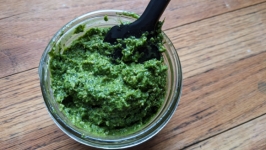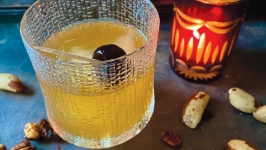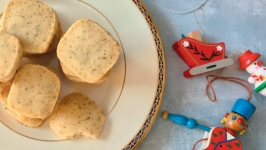Reflections from the Clam Bed
Southeast Alaskan Tribal Network Leads Food Security Research
It is only 6 pm and the full moon is already bright and enormous, hanging above the final strokes of sunset. The moon’s gravity lifts the sea off our coast, exposing an entire bounty of tasty shellfish. During a negative tide in the darkness of winter, mussels grip stubbornly to our reefs—seeming fearful of prying knives. Cockles and clams sink into the mud—apparently afraid of plunging shovels. “When the tide is out, the table is set,” we say in Southeast Alaska, where people love a jar of smoked shellfish.
Our shores are studded with a delicious bounty of fleshy bivalves. Native Alaskans have enjoyed these resources for millennia. The filter feeders of our endless coastline, however, are not only delicious—they can be deadly. Paralytic Shellfish Poisoning, called PSP for short, can lead to sickness, respiratory failure, and even death.
Shellfish become dangerous when they filter and concentrate toxins created by blooms of a particular plankton. During the summer months, with increasing temperatures and sunlight, plankton “bloom” more densely and more often. Traditional ecological knowledge and protocols reflect this. By encouraging people to only harvest on particular beaches, in winter months that include the letter “r,” and to avoid shellfish when water visibility is low and the seas are “in bloom,” this traditional knowledge has helped reduce the accidental ingestion of toxic shellfish. These guidelines however, are inexact and as our oceans and climate change, our shellfish and the plankton they filter also change. We must adapt.
The Sitka Tribe of Alaska (STA) is combining traditional knowledge with cutting edge science to not only measure toxicity and encourage safe harvesting, but to also understand how Alaska’s changing oceans may impact the other coastal resources tribal citizens depend on. It’s an enormous mission which requires collaboration, and the Sitka Tribe doesn’t do it alone.
Meet SEATOR—the Southeast Alaska Tribal Ocean Research network. Created by STA in 2014, this powerful collaboration has since grown to a network of 16 sovereign nations from Kodiak to Hydaburg that work together to protect and improve access to traditional foods.
This summer, I was offered the opportunity to work with STA and SEATOR as the Tribal Youth Intern. I spent long summer days on the dock and in the lab, learning more about my homelands, indigenous sovereignty, food security, and how to tell Pseudo-nitzschia from just plain Nitzschia. To understand the enormous impact this network is having, we must first start small—really small, microscopic even. Let’s go sample some plankton.
Towing the Line
As we carry boxes and buckets down the old Sitka dock, a family lets their boat out into the water. Everyone and their dog are out on this sunny afternoon, making memories with their families and friends as they head out to dip-net sockeye at Redoubt Falls. Some, puzzled by our little net, stop to ask what type of fish we are catching. “Phytoplankton,” we answer with a grin.
I drag the net through the water, watching it sway up and down in the water column, careful to avoid suspended debris and barnacles. Angela Hessenius, the tribe’s AmeriCorps VISTA volunteer, describes it comically as “walking a very slow dog.” Pulling up the net, water gushes out the sides, leaving a small canister concentrated with a murky sample of phytoplankton.
An entire planktonic world floats and putters around our seas. Often overlooked, plankton are an essential food source for many of the charismatic creatures we love to eat like shellfish and salmon. Responding to heatwaves, droughts, pollution, and more, plankton are also indicators of oceanic health. This sample we pulled from the net will be used to better understand Sitka Sound.
We load our plankton sample into the bed of the truck, nestled next to a water sample ready for ocean acidification testing and a bucket of mussels soon to be shucked and checked for PSP toxins. The Sitka Tribe of Alaska Environmental Research Lab (STAERL) sits between processing plants and two harbors. Inside, there’s the traditional laboratory of course—sterile gloves, pipettes, microscopes, and quickly moving people in lab coats. This isn’t a typical lab, however. You can’t miss the totem pole out front, the enormous freezers full of fish, or the well-worn deck where salmon, dried seaweed, and frozen halibut are distributed to elders.
“As tribal citizens, some of our main sources of food are shellfish and fish. So, this is all really about food security,” says Will Peterson, the Environmental Specialist at Sitka Tribe. “There’s periods of times where I remember as a kid, we would primarily be eating salmon. If that’s the only food you have, you are really lucky actually.” After moving to California to study for a degree in Environmental Engineering and Earth Atmospheric Sciences and working various gigs across the State of Alaska, Peterson proudly moved back for this position in June. For Peterson, STA, and SEATOR, this work is about more than scientific inquiry—it’s about ensuring safe and healthy access to the sacred resources tribal citizens rely on.
In the microscopy room, Hessenius identifies and counts each genus of phytoplankton in the sample, focusing on Alexandrium, the consistently toxic phytoplankton that causes PSP. This process repeats across Southeast Alaskan villages, with SEATOR tribal partners conducting their own samples and microscopy before sending shellfish and water samples to the central lab in Sitka. This powerful part of SEATOR is an element that Peterson takes immense pride in.
“This network of samples being collected is not necessarily done by people who had to go off and get a PhD,” says Peterson. “But they are in the communities that their families have been in for centuries, and they are collecting this modern scientific data through this established network. I think it’s opened a lot of doors for people to participate in high level science that they didn’t think they would be able to do before.”
How to Eat Shellfish
There are many ways to feast on shellfish: steamed freshly and dipped in chive butter; nestled carefully in a bed of saffron rice in an Alaskan paella; tickled with a beurre blanc sauce; smoked, canned, and served aboard pilot bread; on pizza; or in a creamy rich chowder. Shellfish are versatile.
Many Alaskans have a soft spot for shellfish. I grew up with buttered scallops and pasta on many a winter night. Many Alaskans are too fearful, however, to test the waters with local shellfish, and avoid them entirely. This even applies to my own family members. After explaining the work I was helping with at the lab, my mother shared her own uncertainties and concerns about where, when, how often, and whether it was ever safe to harvest.
Before the creation of SEATOR, Alaskans were left with a simple guideline: “It’s dangerous, don’t go,” leaving many with questions and without a safe way to harvest.
“That’s not a great management style and not a great answer for folks who maybe need this resource at certain times of the year,” says Kari Lanphier, the Environmental Lab Manager with STA. Lanphier is a bright and enthusiastic presence here at the lab, she’s funny too. “Shellfish don’t run very fast. They are readily available and anytime there is a low tide cycle, folks are able to go out and get them.”
Last year, the tribe saw high levels of PSP in months they didn’t expect—levels over the regulatory limit in some places into November. This, Lanphier notes, is unexpected. But SEATOR’s work, she adds, isn’t all doom, bloom, and gloom.
“This is our fourth summer testing shellfish for PSP and we’re starting to see trends come out. It seems likely that there are places where you can reliably harvest shellfish. So, those same folks that were saying, ‘I don’t harvest at all’ hopefully can now say, ‘I have the tools to understand the risk. I can decide when to harvest and when to not.’”
Adapting With Shifting Seas
STA and SEATOR are not only concerned with toxic shellfish.
“The balance of the ocean, whether it be the warming and acidification of the ocean or the general health, is one of the most important problems we’re facing this century,” says Peterson.
The magnitude of Peterson’s statement is particularly powerful on this sunny Sitka day. Last summer, our community only saw 60 percent of its typical rainfall, and the waters of Silver Bay erupted in a tropical turquoise many have never seen before.
“Changing ocean conditions can impact the ability of our subsistence resources to thrive,” says Peterson. Ocean acidification may mean that shellfish have a difficult time creating their shells and some fish may be unable to detect their prey. “We also suspect that an increase in CO2 provides more opportunities for algal blooms and PSP,” adds Peterson.
Understanding, predicting, and mitigating those changes is critical. “Is there anything that we can better understand in order to improve our adaptability to the changing oceans? That’s important to establish sooner rather than later,” says Peterson, and that’s exactly where his favorite instrument, the Burke-o-Lator, comes in. This state-of-the-art scientific instrument is allowing the tribe to track ocean acidification and measure a series of important parameters that help elucidate ocean health and conditions today and into the future.
Understanding potential changes has far reaching implications, beyond shellfish and beyond subsistence. Our identity as Alaskans, our economies, cultures, and futures are tied intimately to the health of our seas. As our state scrambles to address a widening deficit and argues over what to prioritize, Peterson believes that when it comes to the oceans, we must invest in proactive science.
“We’ve only just begun in the story of ocean acidification. We need this monitoring to go on for decades and we are only three years in, so that is not enough to establish long term trends yet,” explains Peterson. “For us to really understand what’s going on, we need consistent data collection and analysis through to 2030, and 2040, and that is highly dependent on funding and support. Knowing that our legislators support us in doing this work is also very important.”
Today, SEATOR and Sitka Tribe are doing the best they can with the resources they have and they take immense pride in the fact that this science is indigenous led.
“I think that a key aspect of holding on to tribal sovereignty is doing research like this, leading it, and taking the reins as far as creating the data and being the respected source who analyzes it,” says Peterson.
Hope in the Heat
Living in Sitka for all 18 years of my life, I have had my fair share of climate anxiety. This summer, drought was no exception. The connection we have to the land is truly wonderful. However, continued harvests are reliant on how we care for these resources, which has been lacking in many ways since the early days of conquests and colonizers. As an Alaskan today, especially one who’s working in science, I often feel bombarded by news about how our planet is hurting. The persistence and dedication of STA and their collaborative, indigenous-led network, SEATOR, however, give me hope. This little building, perched above a dock made for seaplanes and samples, bustles with scientists, harvesters, tribal members, and many who are all three. We are all working together to improve public health and resources. Now, with reputable data behind me and a long future before me, I’m ready to head back out to dig for clams and help gather the knowledge we need to protect these lands we love.
DISCLAIMER: There are always risks with consuming wild shellfish. In Alaska, there are no beaches that are designated as “safe” beaches for shellfish harvesting. Consuming non-commercial shellfish at any time of year can result in Paralytic Shellfish Poisoning. For more information on the current PSP risk in your area, visit seator.org/data or call the Sitka Tribe of Alaska Environmental Research Lab at 907-966-9650.


